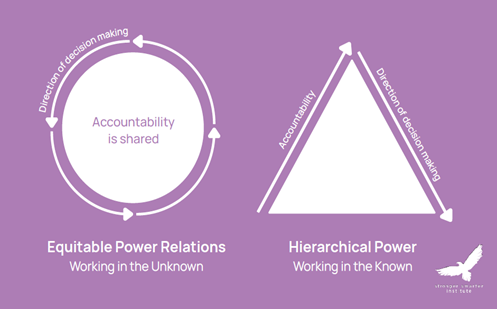The role of non-Indigenous people in the Third Cultural Space
‘Schools that create environments which enable effective collaboration between classroom teachers and Aboriginal and Torres Strait Islander educators can maximise impacts on positive student learning.’ (AITSL, 2021, p. 18)
Non-Indigenous school staff have a responsibility to create culturally safe spaces with power balance, where Indigenous teaching assistants have equal voice.
School staff are often ranked. This system means that sometimes Indigenous teaching assistants in schools go unnoticed. Often in these situations, schools do not draw on their valuable strengths and they are unable to contribute to transformative change1.
Indigenous teaching assistants may also be challenged by meeting with school leadership to discuss their concerns, putting high expectations on them.

Research has found the following:
Often, Indigenous teaching assistants do not have a voice into Indigenous education. They are employed in schools to carry out an extensive list of responsibilities both in and outside of the school. They may be directed by teachers who have not had opportunities to develop their own personal cultural competencies in their schooling or during their Initial Teacher Education degree (Simone, 2022). School staff expect different tasks from Indigenous teaching assistants with minimal training or professional development experiences offered to the Indigenous Teaching Assistants.
A partnership between the Jumbunna Institute and Diversity Council of Australia has identified Ten Truths to centre Indigenous Australian voices to create workplace inclusion. This relates to teachers and school leadership using culturally safe places to work well with Indigenous Teaching Assistants.
One of the Ten Truths is to ‘focus on workplace readiness [cultural safety] rather than worker readiness’ (Jumbunna Institute & Diversity Council of Australia, 2020, p. 18). Teacher reflection is also required, especially regarding the Australian Professional Standards for Teachers.
In schools where places are created for all school staff to interact and learn from each other, relationships between teachers and Indigenous teaching assistants can flourish. There is better understanding and more effective working relationships. The Third Cultural Space enables Indigenous teaching assistants to work ‘well alongside teachers in designing and providing contextualised learning support’ (AITSL, 2021, p. 5).
Implementation strategies and considerations
|
Strategy |
Rationale |
|
Use the Third Cultural Space to support equitable knowledge sharing and accountability |
|
© 2023 Commonwealth of Australia. These resources may be used under a Creative Commons Attribution-Non Commercial-No Derivatives (CC BY-NC-ND 4.0) licence. These resources were created by Stronger Smarter Institute and Indigenous knowledge-holders.